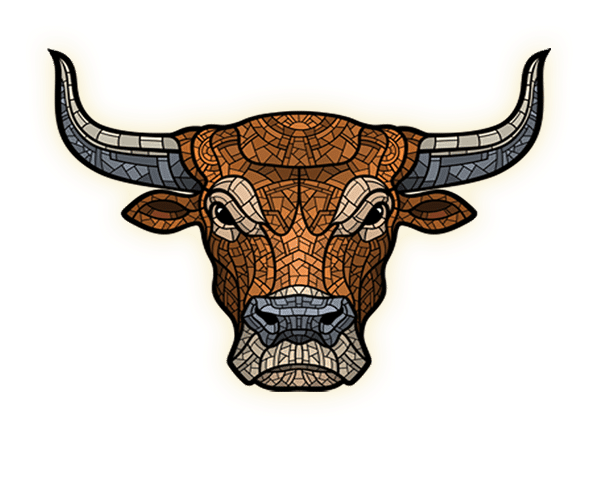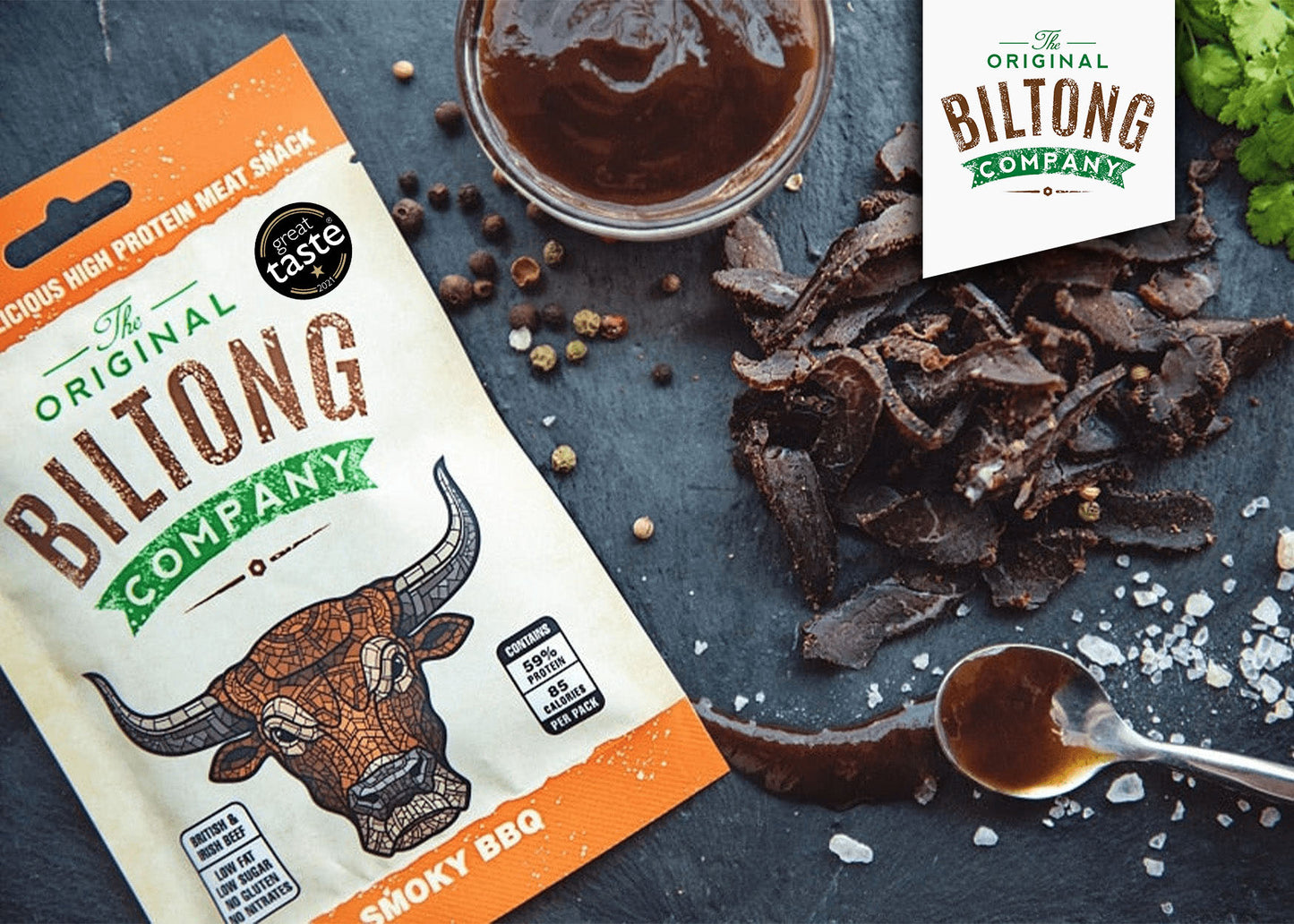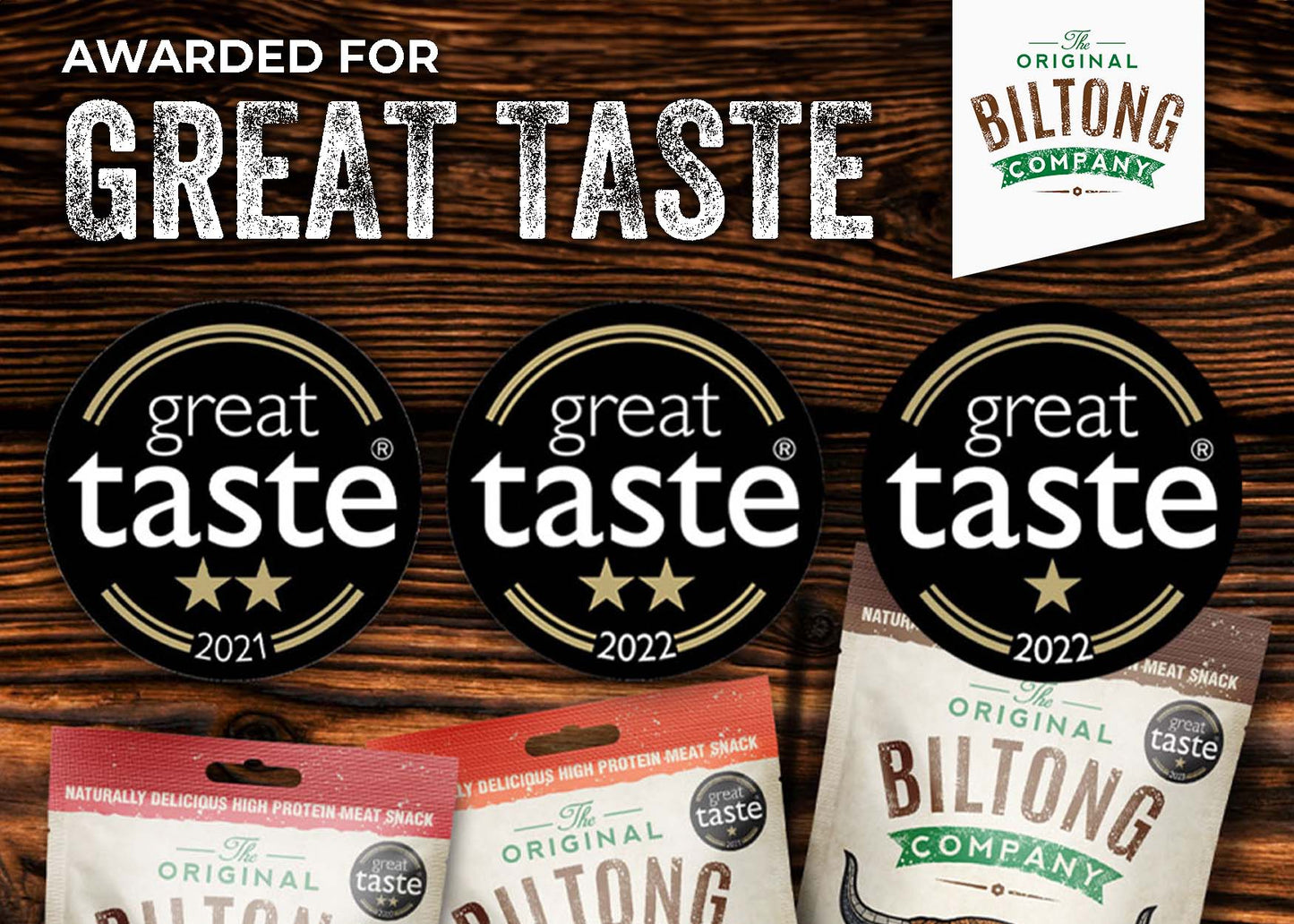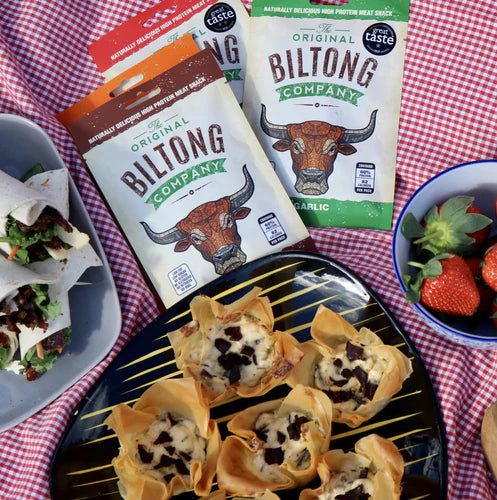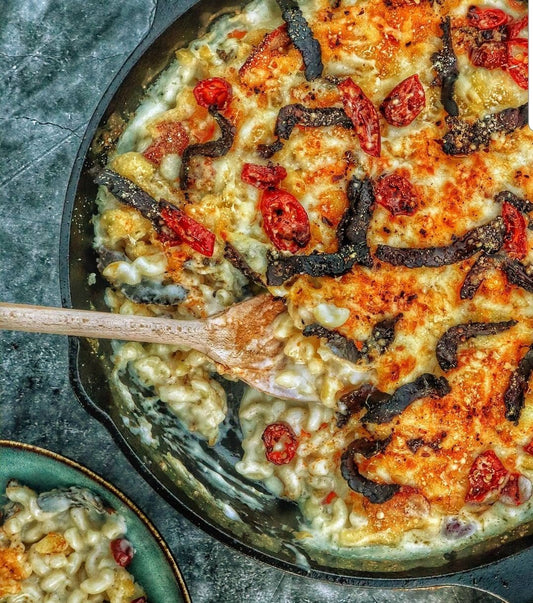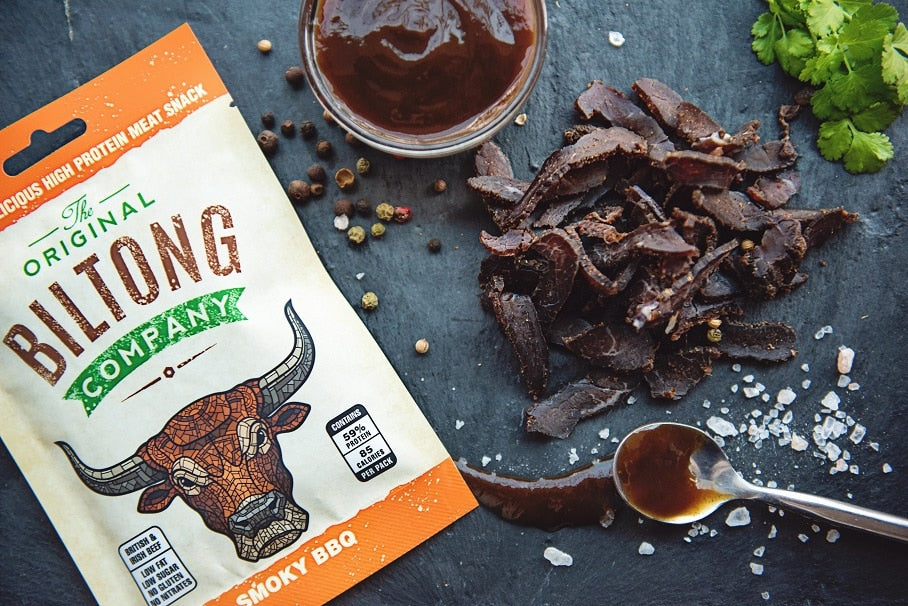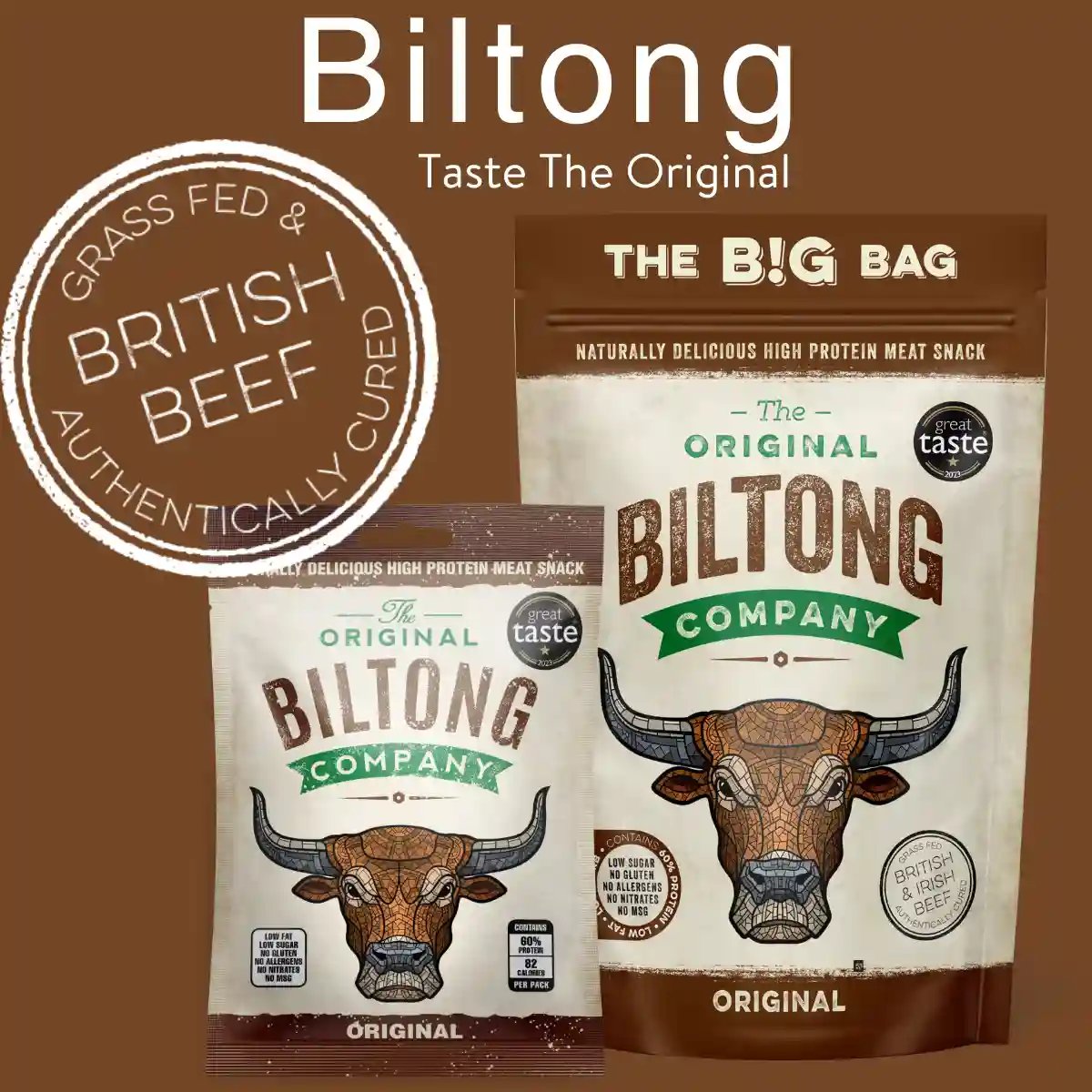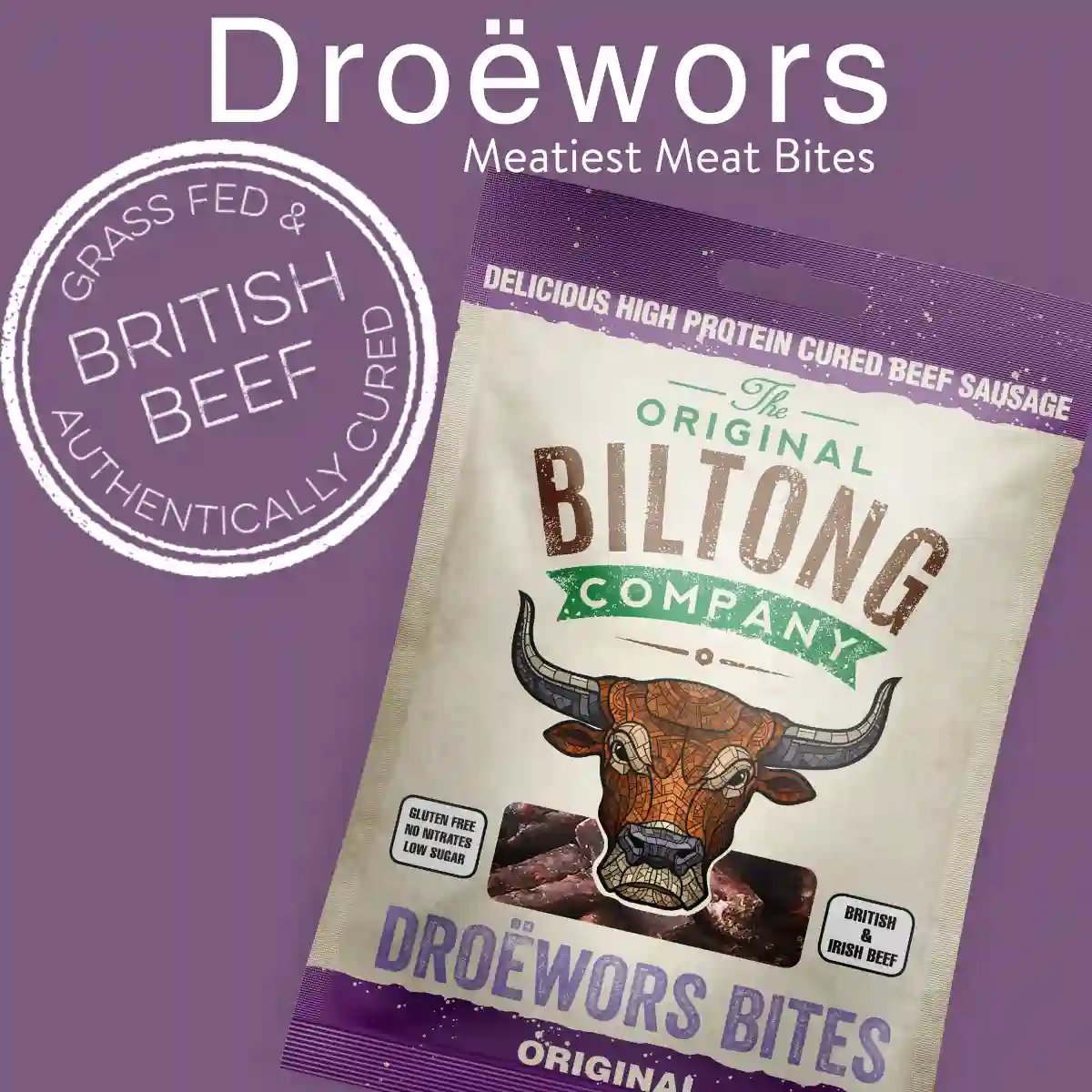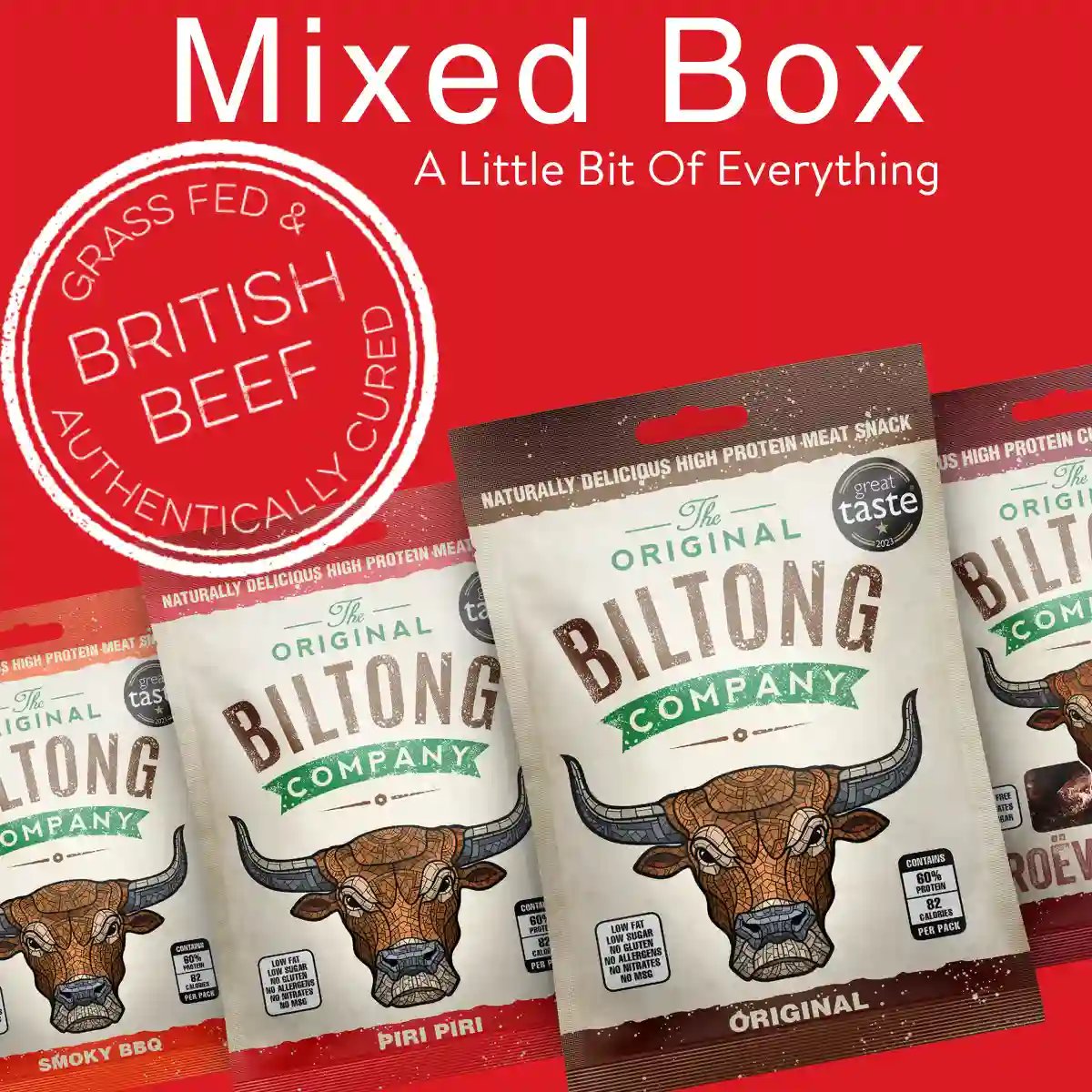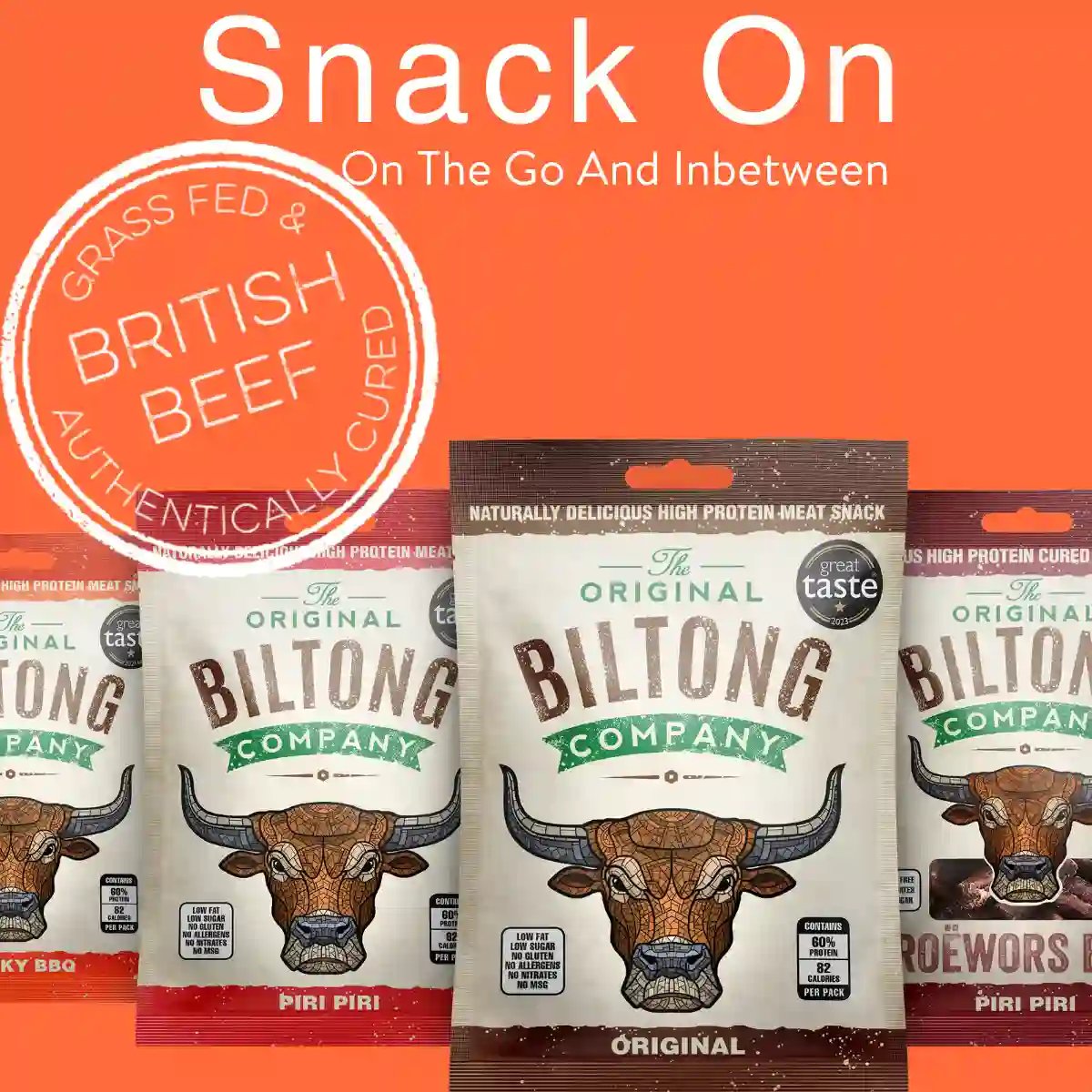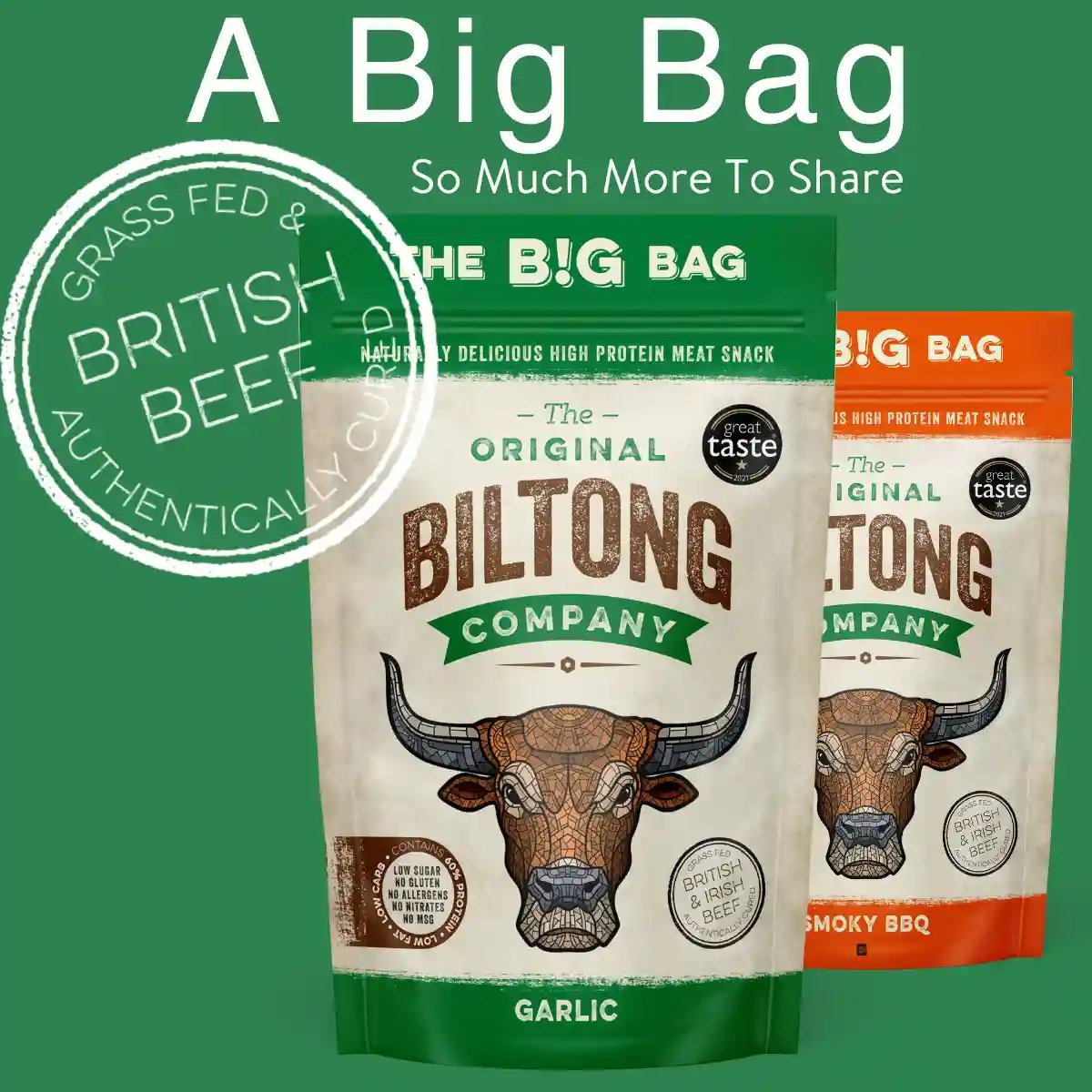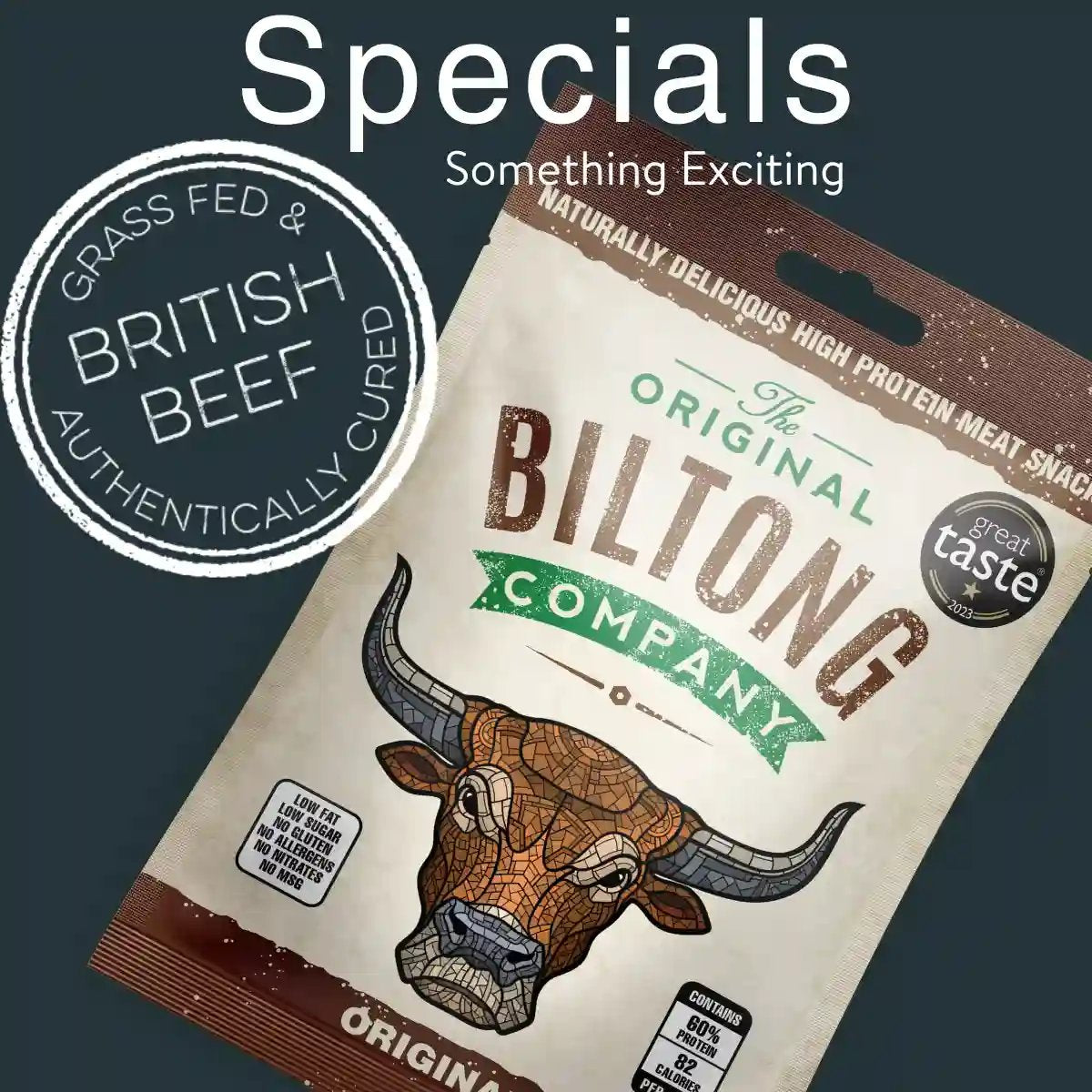When it comes to protein-packed snacks, beef biltong and jerky are both great options. While they both come from meat, that's where the similarities end. They have different histories, preparation methods, nutrients, and taste experiences.
Biltong has its roots in South Africa and has a rich cultural history. Making biltong involves marinating fresh beef strips in vinegar, salt, and spices like coriander, pepper, and paprika, then air-drying them slowly. This gives biltong a tender texture and a flavourful taste that really reflects its South African heritage.
Jerky, on the other hand, originated in North America, where indigenous tribes first used drying and smoking to preserve meat. Today, jerky is made by slicing lean cuts of beef, marinating them in various sauces, and then drying them quickly with low heat and smoke. This results in a dried-but-juicy texture and a unique flavour. It’s important to note that this process cooks the meat, unlike biltong, which is dry-cured.
Before we get into the key differences between them, it's worth noting that both snacks are equally loved by Brits!
The Difference Between the Ingredients
What Does Beef Jerky Contain?
Jerky is made with just a few ingredients, with the simplest jerky containing only dried meat. Common ingredients include salt, black pepper, and garlic. Salt is essential in all jerky because it improves flavour, extends storage life, and removes moisture.
Another common ingredient in beef jerky is potassium sorbate, a preservative. Its main job is to prevent mould, yeast, and bacteria from growing. This helps keep the jerky fresh and extends its shelf life.
Adding potassium sorbate also helps manufacturers meet food safety standards and makes the jerky more convenient and stable on the shelf. This gives you a guarantee of quality and safety.
What Does Beef Biltong Contain?
Just like Jerky, Biltong is made with just a few ingredients alongside the meat. The process starts with marinating strips of beef in vinegar, which helps to cure, tenderise, and preserve the meat.
Salt is another key ingredient in biltong. It draws out moisture and prevents the growth of harmful bacteria, acting as a natural preservative.
Additionally, biltong is seasoned with various spices to enhance its flavour. Some popular spices include garlic, coriander, nutmeg, and black pepper.
Are Both Made From Only Beef?
No, both biltong and jerky can be made from various types of meat. Biltong isn't just limited to beef; in South Africa, you can find versions made from springbok, kudu, and ostrich. Similarly, jerky in the United States is made from different meats like lamb, beef, and even Yak.
The Preparation Method
Biltong is made using an air-drying process, which gives it a tender texture and enhances its flavour. The meat is marinated with vinegar and simple spices, and it usually has little to no added sugar (0-1 gram).
Jerky, on the other hand, is prepared through rapid dehydration using low heat or smoking, which makes it chewier. Jerky typically contains higher amounts of sugar and preservatives compared to biltong, usually around 2-4 grams of sugar.
Taste
Both meat products have a completely different taste, mainly because of how they are made and the ingredients used.
Biltong: Biltong has a rich, meaty flavour. The natural taste of the beef shines through in every bite, with the spices making it even better. The vinegar used in the marinade gives biltong a tangy flavour, balancing the richness of the meat. Its tender texture, thanks to the marination and air-drying process, makes it delightful to bite and chew.
In South Africa, biltong is a staple snack that people often make at home. It’s common to see biltong machines (wooden boxes with a light, fan, and drip tray) in garages or kitchens. Everyone has their own seasoning style and drying process. The difference in taste and texture between drying for 2, 3, 4, or 5 days is quite noticeable, much like how people prefer their steaks cooked: Blue, Rare, Medium Rare, Medium, or Well-done.
Jerky: Jerky, on the other hand, offers a more savoury and sometimes sweeter taste. It's saltier than biltong due to the higher salt content. Just like biltong, jerky is made tastier with different spices and seasonings. Common spices used in jerky marinades include black pepper, garlic powder, onion powder, paprika, and chilli powder.
Nutrients - Which is More Beneficial for Your Health?
Both biltong and jerky offer plenty of health benefits thanks to their micronutrients. However, their nutritional value is affected by factors like jerky's cooking process which breaks down certain amino acids in the proteins.
Protein
Both snacks are rich in protein, with biltong typically containing around 60% protein and jerky containing 40-50%. This makes them excellent sources of protein and a convenient, portable way to boost your intake.

Fat
Biltong has less fat than jerky because it’s made from lean cuts and undergoes minimal processing. However, sometimes the fat is retained for a fattier biltong option. Jerky, on the other hand, may contain additional oil and fat from the marination process.
Both snacks are extremely low in carbs, making them great for low-carb and ketogenic diets.
Salt
Sodium is also another major difference when it comes to nutritional value. Although both contain salt, jerky typically has higher levels due to the use of soy sauce, Worcestershire sauce, and other sodium-containing ingredients in its marinade. For those with hypertension or anyone watching their sodium intake, biltong is a better option because it has less salt.
Calories
When comparing caloric content, biltong generally offers a lower calorie option than jerky due to its simpler preparation method and lower fat content. A typical 25g serving of biltong contains approximately 80-100 calories, while the same amount of jerky may contain 100-150 calories depending on the marinade and added sugars. This caloric difference makes biltong particularly appealing for those monitoring their energy intake while still wanting a satisfying, protein-rich snack that helps with muscle recovery and satiety between meals.
So, Which is Healthier?
In summary, biltong tends to be higher in protein and lower in fat and sodium compared to jerky, making it a healthier option for those mindful of their intake. Both snacks offer a convenient, portable way to boost protein intake, catering to various dietary preferences and tastes.
No matter which one you choose, look for products made with natural ingredients and sustainably sourced meat for the best quality.
Biltong vs Beef Jerky as a Meat Snack
When it comes to healthy meat snacks, look for options that are low in added sugars, made from high-quality meat (preferably free-range and grass-fed), and have minimal additives.
Biltong often fits the bill well. It usually has a simple ingredient list, uses grass-fed beef, and is high in protein without added sugars, making it a great choice for supporting metabolic health.
Similarly, beef jerky can be a healthy option if it comes from grass-fed sources, contains natural ingredients, and has moderate to high protein content with low sugar and additives. However, this isn't always the case, as some beef jerky can be loaded with unfavourable flavourings and preservatives.
That being said, both biltong and beef jerky can be excellent choices for healthy meat snacks when they meet these nutritional guidelines.
Biltong vs Beef Jerky: Which One is More Flavourful?
When it comes to flavour, whether biltong or beef jerky is more flavorful can be subjective, but there are clear differences in their preparation and taste profiles.
Biltong is air-dried and often marinated in vinegar and spices, giving it a more robust, tangy, and sometimes slightly spiced flavour.
Beef Jerky, on the other hand, is typically smoked and seasoned with a variety of spices, sweeteners, and marinades. This can result in a wide range of flavours, from sweet and smoky to spicy and savoury. The smoking process adds a depth of flavour distinct from the tanginess of biltong, though it also breaks down some essential nutrients.
If you prefer a rich, natural meat flavour, you might find biltong more flavorful. If you enjoy a variety of flavours with sweet, smoky, and spicy notes, beef jerky might be more to your liking.
Storing Biltong vs Beef Jerky
Both biltong and jerky contain varying amounts of moisture, depending on the producer and manufacturing process. Because of this, they both require careful storage to maintain their quality.
Typically, biltong and jerky should be kept in a cool, dry place in breathable containers. For longer storage, they should be refrigerated or frozen.
Due to added preservatives and flavourings, beef jerky can be more shelf-stable. It can be stored at room temperature in airtight containers, away from direct sunlight, without the need for refrigeration.
Once either biltong or jerky is exposed to air, it’s best to consume them within 24-48 hours. If you want to keep them longer, you should re-vacuum seal, refrigerate, or freeze them.
